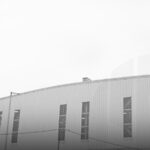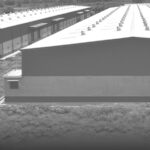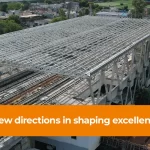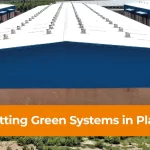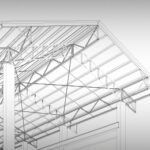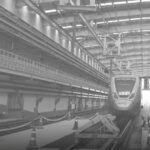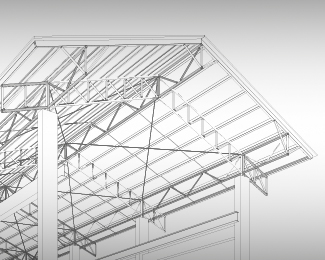Exploring the Advantages of Pre-engineered Buildings Over Traditional Construction Methods
In today’s rapidly advancing construction industry, there’s one innovation that stands out—Pre-engineered Buildings (PEBs). These structures, designed and manufactured off-site, have been taking over as a preferred method for many modern construction projects. Whether you’re looking to build a warehouse, office space, or manufacturing plant, PEBs provide undeniable advantages in terms of speed, cost, flexibility, and sustainability. However, conventional buildings, constructed using traditional methods, still hold sway for certain types of projects. This article will highlight the power of Pre-engineered Buildings, showing how they outperform conventional construction in a variety of ways.
What Are Pre-engineered Buildings (PEBs)?
Pre-engineered buildings (PEBs) are pre-designed, factory-manufactured structures that are shipped to the construction site in modular components. These buildings are often made primarily from steel and other durable materials, which are pre-cut, pre-drilled, and pre-fabricated to fit together easily on-site. The process allows for significantly faster construction compared to conventional building methods.
Role of Pre-engineered Building Manufacturers:
Pre-engineered building manufacturers play a crucial role in the efficiency and quality of PEBs. They ensure that every component is meticulously engineered, adhering to precise design specifications, quality standards, and safety regulations. By manufacturing these components in a controlled environment, manufacturers minimise the risk of human error, material waste, and construction delays.
Benefits of Pre-engineered Buildings in Construction:
The advantages of PEBs are clear:
- Faster assembly and shorter construction times
- Lower overall costs
- Greater flexibility in design
- Higher quality control, ensuring consistency across projects
- Reduced environmental impact
Conventional Buildings: The Traditional Approach
Conventional buildings, by contrast, are constructed entirely on-site using a variety of materials like wood, brick, concrete, and steel. The building process involves designing, sourcing materials, and construction labor on-site, all of which take more time and come with higher costs. While these buildings offer greater design flexibility, they also come with a range of limitations, such as slower construction timelines, higher labor costs, and potential for errors during construction.
The Power of Pre-engineered Buildings
Pre-engineered buildings have emerged as the go-to option for many modern construction projects due to their multiple advantages. Let’s take a closer look at why PEBs are quickly gaining ground and why they should be your preferred option.
Speed of Construction with PEBs
One of the most significant advantages of PEBs is the rapid construction timeline. Pre-engineered buildings are designed and pre-fabricated in a factory, which means most of the construction is done before the components even reach the site. Once at the site, assembly is quick and efficient, reducing the need for extensive labor and on-site coordination.
Comparison to Conventional Construction Timelines:
In contrast, conventional buildings often require months or even years to complete, especially when the construction involves complex designs or traditional materials like brick or concrete. These buildings are built step-by-step on-site, with each stage dependent on the completion of the previous one. Delays, unexpected weather conditions, and labor shortages can extend timelines further.
The faster pace of Pre-engineered Buildings doesn’t just save time—it saves money. Shorter timelines mean that projects are completed quicker, leading to faster returns on investment, especially for commercial and industrial buildings.
Cost Savings with PEBs
PEBs are known for their cost-effectiveness. Although the initial investment might be slightly higher compared to conventional buildings, the long-term savings far outweigh the upfront cost. Pre-engineered buildings save money in several ways:
- Lower Labor Costs: The majority of the work is done off-site, reducing the labor required on-site. Less time spent on construction means fewer resources are needed.
- Material Efficiency: With PEBs, manufacturers order and cut materials based on exact specifications, minimizing waste and excess materials.
- Faster Project Completion: The speed of construction leads to fewer costs related to renting construction equipment and managing the project.
Overall, while the initial price tag for PEBs might be higher, the project’s faster completion and lower long-term operating costs make them a more affordable solution in the long run.
Customisation and Design Flexibility in PEBs
One of the most common misconceptions about Pre-engineered buildings is that they lack customization options. In reality, PEBs offer a high degree of flexibility. Pre-engineered building manufacturers can tailor designs to fit specific needs, whether it’s a warehouse with specialized shelving or a retail space that requires unique facade designs. The modular nature of PEBs allows for easy adjustments in both size and shape, which means that your vision for the project can still come to life.
Additionally, PEBs can be customized with various aesthetic elements such as different finishes, color schemes, and window placements. These buildings can meet both functional requirements and aesthetic goals.
The Role of Quality Control in PEBs
One of the critical advantages of PEBs is the superior quality control achieved through the factory-manufacturing process. Every component is produced in a controlled environment, where rigorous testing and quality checks ensure that materials meet specific standards.
In conventional construction, the quality of materials and workmanship can vary, especially since it relies heavily on on-site labor. This increases the risk of human error and results in variations in quality from one part of the building to another. With PEBs, however, the process is standardized and quality is consistently high.
Sustainability and Eco-friendliness of PEBs
Pre-engineered buildings are also known for their sustainability. These structures are built with energy efficiency in mind, often using eco-friendly materials that contribute to lower energy consumption and a reduced carbon footprint. The materials used in PEBs, such as steel, are highly recyclable, making them a more environmentally friendly choice than conventional building materials like concrete and brick.
Conventional Buildings: The Challenges and Limitations
While conventional buildings still have their place in the construction industry, they come with a set of challenges that make them less appealing for many modern projects.
Challenges of Slow Construction in Conventional Buildings
The construction time for conventional buildings can be long, especially when factoring in delays due to weather, labor shortages, and coordination issues. Pre-engineered buildings, on the other hand, bypass many of these problems due to their streamlined manufacturing and assembly process.
High Labor and Material Costs in Conventional Construction
Conventional buildings also come with high labor and material costs. The on-site construction process is often more resource-intensive, requiring a larger workforce and a variety of materials. Additionally, delays in the construction process can drive up costs due to extended project timelines.
Why PEBs Are the Future of Construction
As technology advances, so does the power and potential of Pre-engineered buildings. The industry is evolving to meet the demands for faster, more sustainable construction solutions, and PEBs are leading the way.
Conclusion
Pre-engineered buildings offer an unparalleled combination of speed, cost-effectiveness, flexibility, and sustainability. With the support of pre-engineered building manufacturers, these structures can be customized to fit any project’s needs while offering long-term benefits. Whether you are looking to construct a large warehouse, a retail center, or an industrial complex, Pre-engineered Buildings provide a superior solution to conventional construction methods.
FAQs
- Are Pre-engineered Buildings as customisable as conventional buildings?
Yes! PEBs offer significant customisation options, including size, shape, and design elements. They can meet both functional and aesthetic requirements. - How much faster are Pre-engineered buildings compared to conventional ones?
Pre-engineered buildings can be completed in a fraction of the time compared to conventional buildings, often reducing construction timelines by up to 50%. - Are PEBs more eco-friendly than conventional buildings?
Yes! PEBs are energy-efficient, use sustainable materials, and are fully recyclable, making them a greener option compared to conventional buildings. - What kind of projects are best suited for Pre-engineered Buildings?
PEBs are ideal for industrial, commercial, agricultural, and warehouse buildings, among others, due to their speed and cost-effectiveness. - How do Pre-engineered buildings compare in terms of cost to conventional buildings?
While PEBs may have a higher upfront cost, they result in long-term savings due to reduced construction time, lower labor costs, and decreased material waste.



